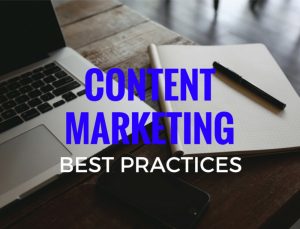
Content marketing is the new buzzword for what we used to call “writing.” Its goal is to create and distribute relevant and engaging material that attracts, acquires and retains customers. The ultimate objective is to enhance the bottom line. When executed correctly, content marketing produces information that companies can use to support their business development initiatives. Additionally, content marketing demonstrates companies’ areas of expertise and increases visibility, credibility and name recognition in their marketplaces. Here are some of the many content marketing formats.
Examples of Content Marketing
- Bylined articles: Subject matter experts create content for the editorial pages of magazines. Topics include trends in the industry, problem/solution scenarios, how-to tips, case studies and other topics of interest to readers.
- White papers: White papers are authoritative reports that identify a challenge or problem in the marketplace and your company’s ability to resolve it. They are used to educate, inform and help readers identify specific and practical resolutions.

- Case studies and success stories: The content for these projects represents your company’s accomplishments. Unlike white papers and articles, case studies and success stories can be very self-promotional. They include documented results that feature your products and/or services as a solution to a specific challenge that earned your customer’s gratitude and continuing business. Case studies are testimonials of your expertise.
- Blogs: A blog is the online “diary” of your business where you share exciting news about your company, trends in the industry and personal insights of interest to your customers, prospects and the marketplace. Use blogs in conjunction with social media and email campaigns.
- Books: Books can be the single-most effective tool to position you as a thought leader or expert in your industry. They can be short or long, academic or informal, self-published or traditionally published. Additionally, they have a long shelf life and represent one of the most powerful ways to promote your business, generate media exposure and secure important speaking engagements.
- Newsletters: Digital formats that are easily updated on the web and in emails have virtually replaced print newsletters. When writing for busy readers, it is important to create crisp, sharp, concise and value-oriented content. In addition, the content should include eye-catching graphics and links to other sources. A branded format ensures a higher open rate that keeps readers coming back for more.
- Web content: What’s the first thing you do when you want to learn more about a company? Google it. Therefore, your online presence is critical to your business success. With just seconds to capture a site visitor’s interest, engaging and relevant content is key to helping your site and business stand out from your competitors. Keep content fresh and encourage visitors to return for more.
- Press releases: Companies use news releases to announce a wide variety of corporate updates including new product announcements, mergers and acquisitions, corporate appointments and milestones. It’s perfect to use press releases when the information is time sensitive.
Use a Variety of Content Marketing Pieces

According to the Content Marketing Institute, 70% of B2B marketers are creating more content than they did last year. Regardless of the format of content marketing used, the fact is, every business needs to communicate with its target audiences. It’s a matter of determining frequency, messaging and the right medium to use for maximum impact.
